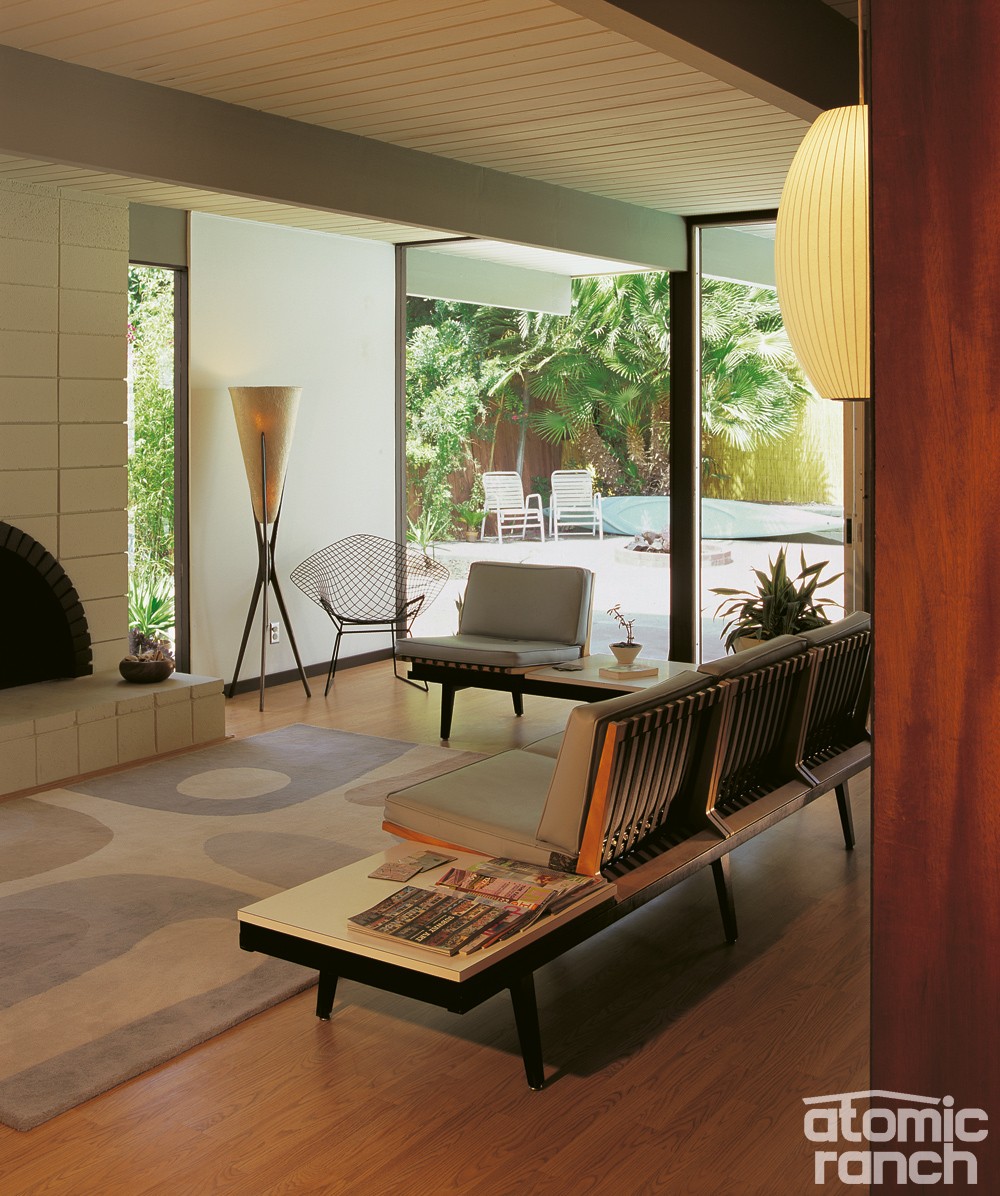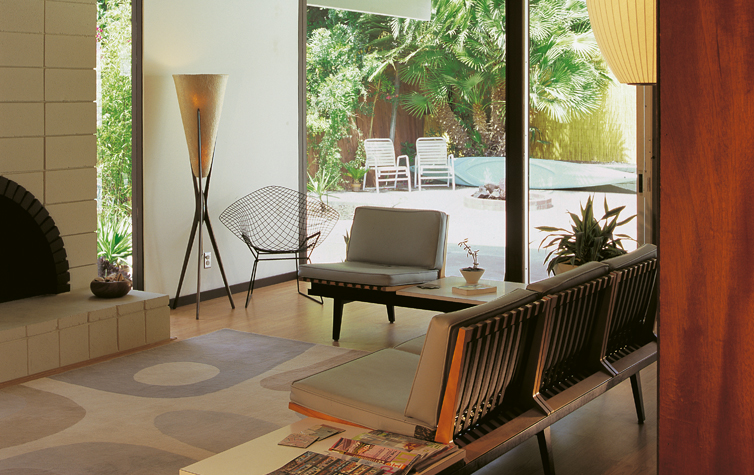
After securing the purchase of the home, owners Jon and Gayle Jarrett found the original blueprints (part 1) and began a journey of paint and paneling. Jon, a machinist in the aerospace field, and Gayle, who works in the surf/skate apparel industry, had cut their renovation teeth on their first house, a 1940s home in Costa Mesa. This home restoration promised to be more daunting in its scope.
“One of the first things I wanted to do was pull off the cladding, which I thought would be easy,” Jon says. “But the aluminum would fail around the big, heavy roofing nails they’d used to install it. A worker and I had to use claw hammers to remove all of those; the original siding underneath was pretty worked.”
The Jarretts ordered 36 sheets of the unique-to-Eichlers “Thin-line” siding from a source in Northern California at about $80 a sheet, plus shipping. Contractor Randy Clerico, who has done other such siding projects in the Eichler tracts, removed and replaced one sheet at a time and fabricated the corner caps that cover the butt joints where two sheets meet.
Inside, the home restoration continued, with the couple pulling up the glued-down carpeting and evaluating the original Philippine mahogany paneling. They were faced with two dilemmas: should they go with cork, linoleum, bamboo or terrazzo floors or stick with the Pergo that had been installed in the hall and multipurpose room off the kitchen; and refinish or replace the wall panels?
“It’s tricky: what lengths do you want to go to save the original stuff?” Jon asks rhetorically. Concluding that the primed and painted paneling was unsalvageable, the couple chose 1/4” Honduran mahogany, pricey at around $40 per sheet. “Lots of places stock the Luan variety, but I wasn’t happy with the quality,” he says. “I stood a few Honduran ones up and saw that the grain pattern was really pretty and was going to look sharp.” He finished the panels with orange flake shellac cut with alcohol, a wipe-on wipe-off process, then knocked back the sheen by sanding lightly with a Scotch-Brite pad in lieu of steel wool.
As for the nasty sand-texture paint: “It was one of those bad ideas from a home improvement program that shows a quick way to beautify your home. I’m still a big fan of beauty is in the eye of the beholder, but in the green dining room, it looked like guacamole had been hurled on the walls. We had to pay a guy good money to scrape it off with a heat gun and a spatula. It was a lot of effort to unwind all of this stuff,” he says.
“Most Eichler buyers are looking for something as untouched as possible, so realtors who tell sellers to spruce things up just to sell are doing a disservice,” Gayle offers.
The Home Restoration Continues
With the home restoration underway, the kitchen and dining room were all that stood in the way of their dream home. They weren’t going down without a fight. Found out how they tackled the beast in part 3!












